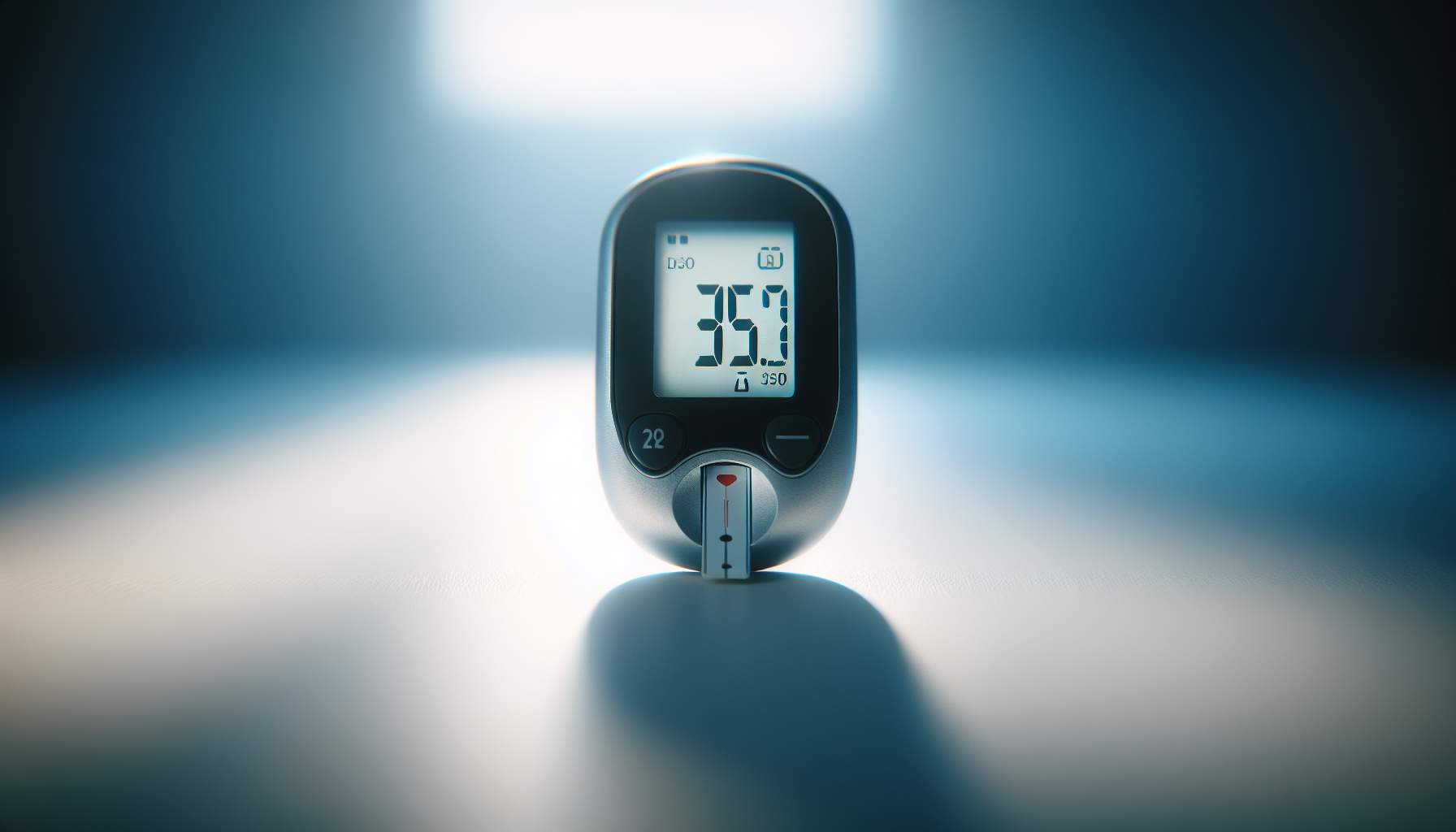The last Tuesday of March marks a crucial day dedicated by the American Diabetes Association to raise awareness about diabetes, a major health threat in the U.S. This time around, it lands on March 24, 2020. It’s high time we dive into discussions about this deadly disease that’s taking too many lives. Let’s get talking.
Understanding Diabetes and Its Importance
Diabetes is essentially a condition where the level of glucose, commonly referred to as sugar, in your blood skyrockets. This happens because insulin, a crucial hormone responsible for moving glucose into your cells from your bloodstream, fails at its task. There are two main reasons why this might occur:
– In individuals with type 1 diabetes, which typically manifests from childhood, the pancreas doesn’t make insulin.
– On the other hand, people develop type 2 diabetes usually later in life when their bodies start ignoring insulin’s signals.
Both scenarios lead to an overload of sugar in the bloodstream, setting the stage for diabetes.
American Diabetes Association Alert Day 2020: A Quick Overview
Every year, on the fourth Tuesday in March, communities across the country come together to mark Diabetes Alert Day. This year, that day falls on March 24. It’s a wake-up call reminding us of the critical need to pay attention to diabetes—a condition affecting over 30 million Americans.
While it’s crucial to keep diabetes in our thoughts throughout the year, Diabetes Alert Day serves as a special prompt. It encourages us not just to educate ourselves about this prevalent disease but also to assess our own risk or even get tested. Besides personal health checks, the day is an opportunity for everyone to contribute by taking part in various awareness-raising activities and events organized for this occasion.
Let’s use this day as a stepping stone towards better health—not only for ourselves but also for those around us who may be living with or at risk of developing diabetes. Through education and proactive engagement, we can all play a part in tackling this widespread condition.
Key Facts about Diabetes
What Increases Your Chances of Getting Type 2 Diabetes?

Exploring the factors that might hike up your chances of getting type 2 diabetes is crucial. A mix of inherited traits, lifestyle choices, and certain health conditions plays a big role in this. While you can’t do much about the genes passed down from your folks or the number of candles on your birthday cake, there are some aspects within your control.
To guard against the risk, it’s wise to get familiar with what ups the odds:
– Packing extra pounds
– Crossing into middle age and beyond
– A family backdrop sprinkled with diabetes cases
– Elevated blood pressure readings
– An increased triglyceride level in your bloodstream
– Leading a life more sedentary than active
– Battling bouts of depression
– Encountering polycystic ovary syndrome (PCOS)
– Belonging to specific racial or ethnic groups such as African American, Hispanic/Latino, among others
It’s key to remember that ticking off one or even several boxes doesn’t doom you to develop diabetes. However, recognizing these warning signs allows for proactive steps towards healthier living choices — tweaks in diet and a boost in physical activity can make considerable strides toward prevention.
What are the Methods to Test for Diabetes?
In the United States, a significant number of diabetes cases remain unidentified. Recognizing the importance of early detection can make a world of difference. If you’re wondering how to go about checking for diabetes, there are several straightforward steps you can take.
Firstly, keep an eye out for any sign that seems unusual or concerning. Symptoms might be your body’s way of signaling that something’s off, so paying attention is key. Next up, consider taking an online quiz designed to evaluate your risk factors for diabetes. These quick assessments provide valuable insights without needing to step out of your home.
Alternatively, embracing technology and modern medical advancements could also lead you toward at-home testing options. Whether it’s through DNA analysis or blood tests sent right to your doorstep, these tools offer a closer look into either your genetic likelihood of developing diabetes or present glucose levels.
Each approach offers its own set of advantages but remember, staying informed and proactive about your health paves the way towards better outcomes down the line.
Be Aware of Signs
Recognizing prediabetes can be tricky since it often flies under the radar without any noticeable symptoms. However, understanding what to watch for could help catch diabetes in its early stages, making it less daunting than it seems at first glance. For those with type 1 diabetes, it’s likely not news as diagnoses typically occur during childhood. The American Heart Association highlights several key indicators to be vigilant about:
– A constant feeling of thirst
– An unexplained increase in hunger
– Experiencing fatigue more frequently
– Needing to urinate often
– Unexpected weight loss
– Vision becoming fuzzy
– Breath that smells sweet or fruity
On the flip side, type 2 diabetes shares many of these symptoms but throws a curveball with one additional sign: wounds that just don’t seem to heal.
Spotting these signs doesn’t guarantee you have diabetes, but they are red flags urging you to consult with a healthcare professional. Ignoring them might mean overlooking an opportunity for early intervention, so keeping an eye out is crucial for your health journey.
Assess Your Diabetes Risk
The American Diabetes Association offers a quick online test to gauge your diabetes risk, based on key factors like weight, blood pressure, and ethnicity. It’s a speedy process, taking barely a minute to do.
Conduct a DNA or Blood Test at Home
If you’re curious about your risk for diabetes or want to check your blood glucose levels, there are several ways to go about it without stepping into a doctor’s office. For starters, an inexpensive finger-prick glucose monitor available online can quickly tell you where your levels stand. This is a solid first step if you’re considering discussing diabetes with your healthcare provider.
Alternatively, for a more comprehensive view of your blood sugar over time, consider sending a sample to a lab through an online service that measures Hemoglobin A1c (HbA1c) levels in your blood. This test provides insight into your average blood sugar levels over the past three months.
Taking it up a notch, DNA tests offer insights without the need for blood samples. By analyzing DNA from a cheek swab or saliva sample, these tests can reveal whether you’re genetically predisposed to developing diabetes. Though they won’t indicate current blood sugar levels, they provide valuable information on potential future risks.
Several top-notch providers offer these types of tests:
– Vitagene focuses on how genetics impact diet and fitness, offering personalized advice along with their DNA testing services.
– Living DNA‘s Wellbeing test dives deep into how your body processes sugars and other foods, coupled with tailored diet and exercise plans.
– EasyDNA offers an All-In-One Health Testing Package that screens for genetic markers associated with both type 1 and type 2 diabetes among other things (note: this particular test isn’t available in the US).
– Futura Genetics examines predispositions towards common diseases including various types of diabetes and suggests lifestyle adjustments.
– HealthCodes DNA‘s Wellness Panel explores factors like glucose cardio response and insulin sensitivity response which could influence type 2 diabetes development.
– Finally, Everlywell provides General Wellness tests inclusive of HbA1c measurements reflecting recent blood sugar levels which could necessitate consulting with a physician about diabetes management strategies.
For those preferring direct measurement of long-term sugar levels in the comfort of their home,< strong>LetsGetChecked‘s individual Diabetes Test fits the bill perfectly by requiring just a simple finger prick.
In summary, whether opting for immediate readings via glucose monitors or seeking deeper genetic insights through DNA analysis – tackling health concerns has never been more accessible. With technology at our fingertips and cutting-edge science guiding us forward we have powerful tools at our disposal not just to understand but also potentially mitigate health risks before they manifest as full-blown conditions.
Minimizing Your Chance of Developing Type 2 Diabetes
Discovering your blood sugar levels are as high as a diabetic’s is a red flag to have a chat with your doc ASAP. However, if you find out through a DNA test that diabetes might be lurking in your genes, it’s time to lace up those sneakers and make some lifestyle changes pronto to shield yourself from its grasp.
Boost Your Physical Activity
Not moving much can skyrocket your chances of getting type 2 diabetes. Aim for a half-hour of movement on most days, and don’t sweat it if the gym’s not your scene. Whether you’re busting moves or sprinting in the open air, it all counts.
Shed Pounds and Maintain It
Being overweight increases your chances of getting type 2 diabetes. To see if you’re on track, check your BMI online. If it’s high, shedding those extra pounds is crucial.
Maintain a Well-rounded Diet
The food you eat plays a significant role in determining your vulnerability to type 2 diabetes. Opting for a diet that includes plenty of whole grains and minimizes trans-fats could be your ticket to reducing the odds of this condition. When in a pickle about what’s best for your health, seeking advice from a nutrition expert or exploring some top-notch diet and fitness DNA analyses might just be the way to go. Such steps can offer personalized dietary guidance, tailored specifically to align with your genetic profile.
The Key Points! (Focusing on Low Carb)
Even though Diabetes Alert Day is celebrated just once a year, it’s crucial to remember that diabetes demands our attention every single day. Being alert for the common symptoms is key; if they appear, getting tested can provide peace of mind. Moreover, adopting lifestyle changes to minimize risk factors is wise. If concerns about diabetes arise, consulting with a healthcare professional is advisable. Additionally, participating in raising awareness on March 24th each year plays a significant role in educating others about this condition.
Additional Information
Living with diabetes can feel like you’re walking a tightrope. The National Institute of Diabetes sheds light on the importance of managing this balancing act for your overall health. It’s not just about watching sugar levels; it’s also about keeping an eye on your heart and overall wellbeing.
The American Diabetes Association emphasizes the power of knowledge. Knowing what to munch on, how much to move, and when to take your meds can make all the difference. It’s like having a roadmap in a foreign land, invaluable for navigating through daily decisions.
Over at the American Heart Association, there’s chatter about the link between ticker troubles and blood sugar battles. They remind us that our heart doesn’t beat just for love; it needs care, especially when diabetes is in the picture. Think of it as making sure your car has oil; without it, you’re going nowhere fast.
The folks at the Diabetes Research Institute Foundation are busy bees working towards breakthroughs that could one day make insulin injections history. Their hopes are high for turning today’s science fiction into tomorrow’s reality—a world where diabetes is but a memory.
In essence, living with diabetes is more than just counting carbs or poking fingers. It’s about keeping eyes wide open to everything from plate portions to pumping iron, all while dreaming big about a future free from its clutches. As we stride forward, let’s carry hope in one hand and determination in the other — ready to tackle whatever comes our way.















![DNA Glossary: Key DNA Definitions to Know [2024 Update] – Your Guide to Navigating the Complex World of Genetics 2024 DNA Glossary: Unlock the Secrets of Genetics](https://www.musterr.com/wp-content/uploads/2024/03/2024-dna-glossary-unlock-the-secrets-of-genetics-1709502590-150x150.jpg)

